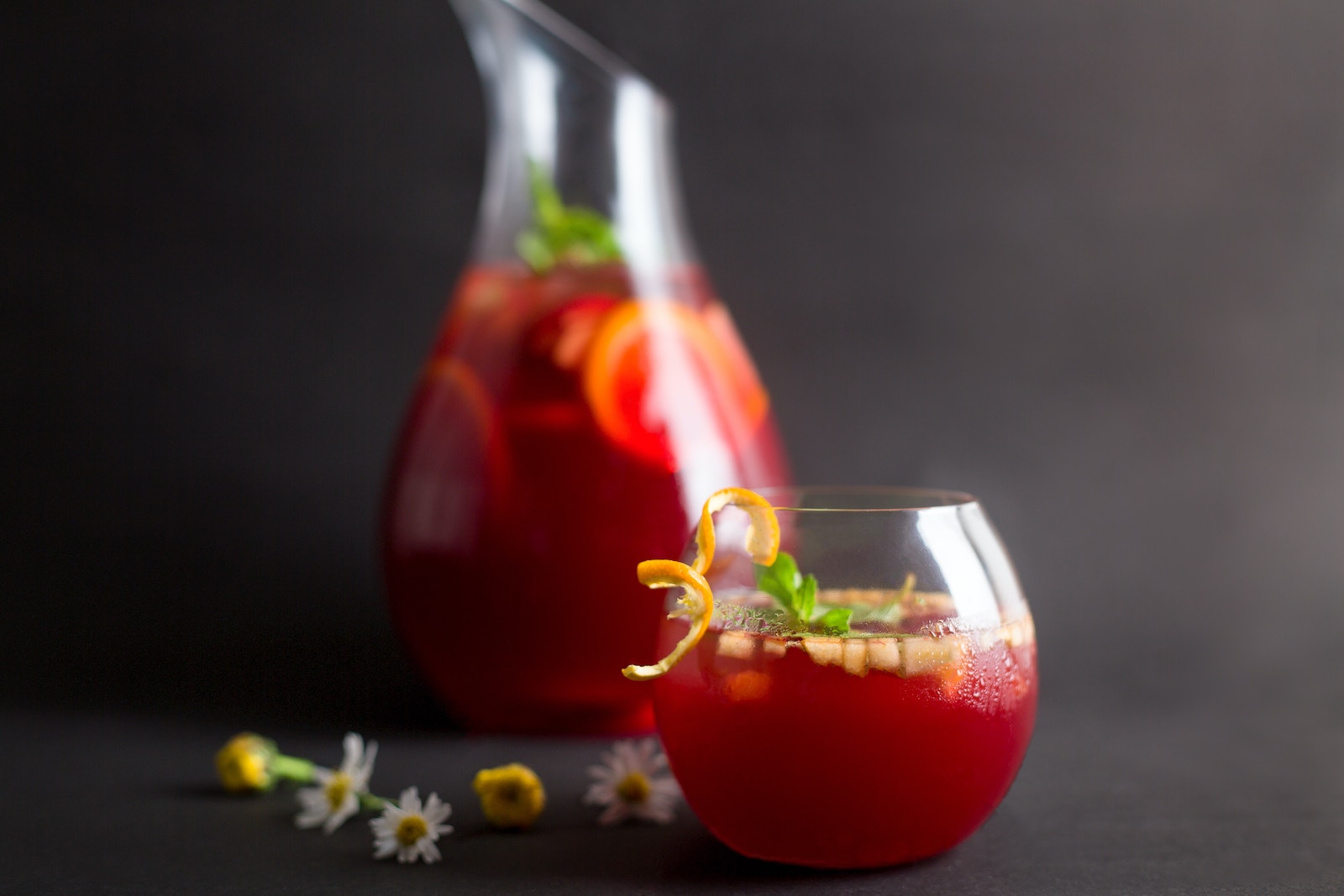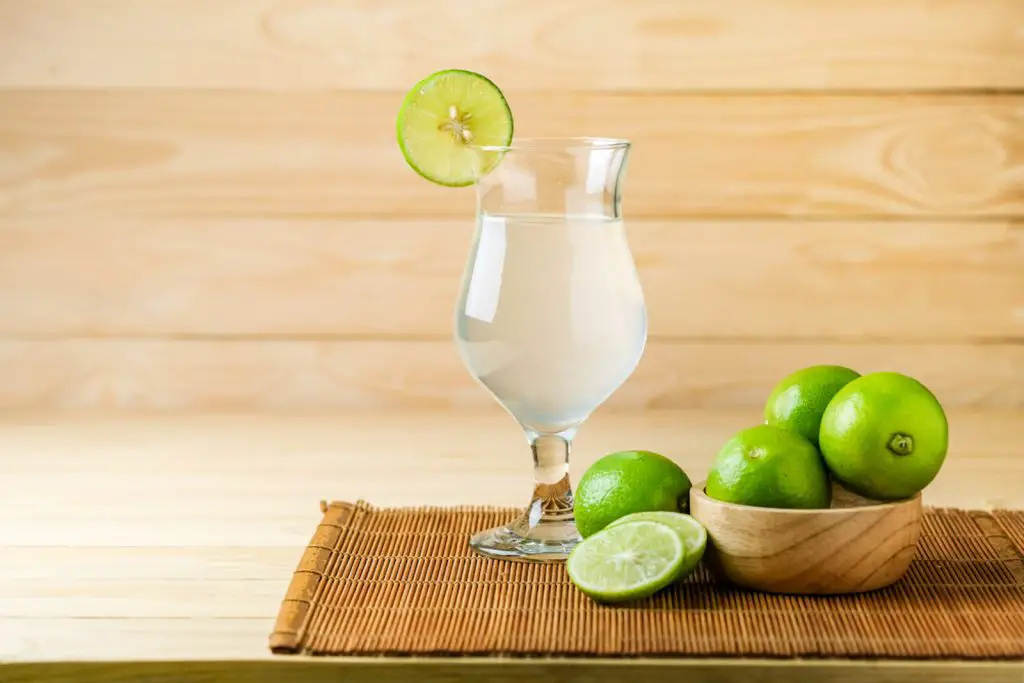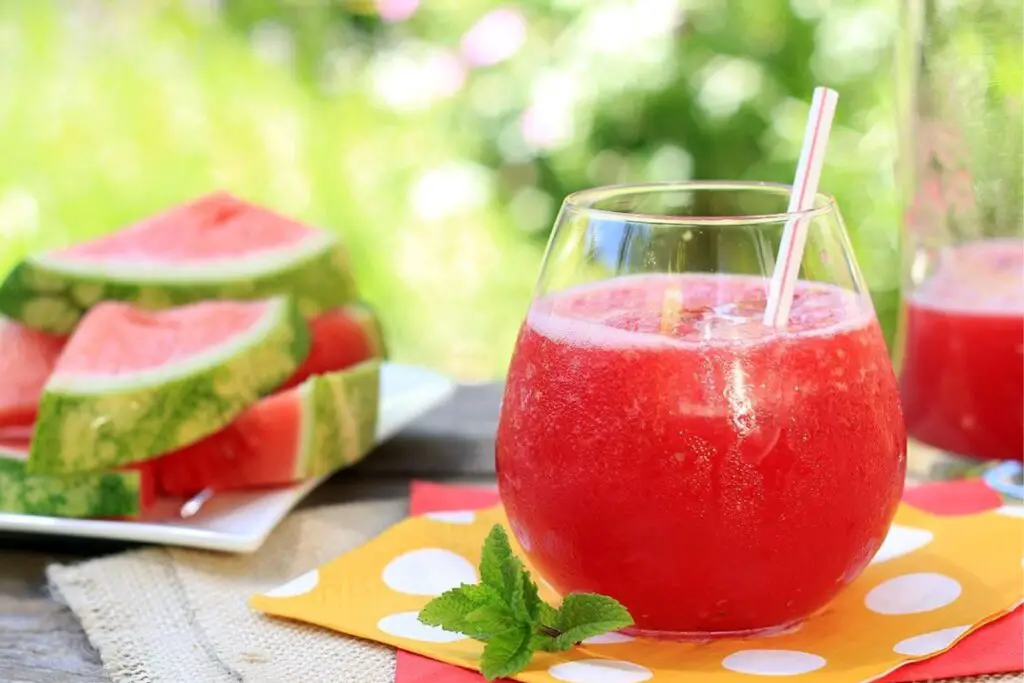
Sangria is a delightful and refreshing beverage that originates from Spain. It’s a fruity and wine-based concoction that’s perfect for gatherings and warm-weather occasions. While sangria is typically enjoyed freshly made, there might be times when you have leftover sangria or want to prepare a batch in advance. Freezing sangria can be a convenient way to preserve its flavors and enjoy it at a later time. By following these simple steps, you can successfully freeze sangria while maintaining its vibrant taste and aroma. This article offers a comprehensive guide on freezing sangria for future enjoyment.
Here’s a step-by-step guide on how to freeze sangria:
Step 1: Prepare your sangria
Whether you’re dealing with leftover sangria from a festive event or you’re planning to make a fresh batch to enjoy later, the key to successfully freezing sangria lies in its initial preparation. Ensuring that your sangria is well-prepared and perfectly mixed before freezing will help retain its delightful flavors and textures even after it’s been thawed.
When preparing your sangria, follow these essential steps:
- Select Quality Ingredients:
Choose fresh, ripe fruits that complement the flavors of the wine and enhance the overall taste of the sangria. Common fruits used in sangria include oranges, lemons, limes, apples, berries, and even peaches. The type of wine you select, whether red or white, can significantly impact the final taste, so opt for a wine that you enjoy drinking on its own.
- Mix Your Sangria:
In a large pitcher or bowl, combine the wine, fruits, and any additional ingredients like sweeteners or spirits. The proportion of wine to fruit should strike a balance between the wine’s richness and the fruit’s sweetness. Some recipes might call for added soda, sparkling water, or even a splash of brandy to give the sangria an extra kick.
- Allow for Flavors to Develop:
After mixing, refrigerate the sangria for a few hours, or even overnight if possible. This step allows the flavors of the fruits to infuse into the wine, creating a harmonious blend that’s both refreshing and satisfying.
- Taste and Adjust:
Before freezing, give the sangria a taste to ensure the flavors are well-balanced. You can adjust sweetness, acidity, or even the level of alcohol if needed. Remember that freezing can sometimes dull flavors slightly, so having a well-balanced sangria to start with is important.
Can I freeze sangria with carbonated ingredients?
Freezing sangria with carbonation can affect bubbles and taste. It’s best to add carbonated elements when serving for optimal fizziness. Be cautious, as freezing might cause carbonated ingredients to lose their effervescence.
Can I freeze sangria made with white wine?
Yes, you can freeze sangria made with white wine. However, freezing might slightly alter flavors and textures due to the wine’s characteristics. Expect potential subtle changes upon thawing, but it remains a feasible preservation method.
Can I freeze sangria with herbs or spices?
Yes, you can freeze sangria with herbs or spices. However, their flavors might intensify during freezing. Adjust the amount to taste and consider adding fresh herbs after thawing for a balanced flavor.
Can I freeze sangria without fruit?
Yes, sangria can be frozen without fruit. However, fruit contributes to its characteristic flavor profile. Consider retaining some fruit or add fresh fruit when serving for an authentic taste experience.
Step 2: Choose appropriate containers
After meticulously preparing your sangria to perfection, the next crucial step in the process of freezing sangria involves selecting the right containers for storage. Choosing the appropriate containers ensures that your frozen sangria retains its taste, texture, and overall quality, allowing you to enjoy a flavorful beverage even after it’s been frozen and thawed.
When selecting containers for freezing sangria, keep the following factors in mind:
- Freezer-Safe Containers:
Opt for containers specifically designed to be safe for freezing. These containers are typically made from materials that can withstand the cold temperatures of the freezer without becoming brittle or cracking. Plastic containers, glass jars, and certain types of food-grade bags are commonly used for freezing liquids like sangria.
- Airtight Sealing:
Choose containers with airtight lids or sealing mechanisms. A proper seal prevents air and moisture from entering the container, which can cause freezer burn and affect the taste and texture of the sangria. A tight seal also helps preserve the original flavors and prevent any unwanted odors from permeating the drink.
- Portion Sizes:
Consider the portion sizes you’ll want when serving the sangria. It’s a good idea to freeze the sangria in portions that are convenient for your future consumption. This way, you can thaw only the amount you need without having to defrost an entire batch.
- Visibility and Labeling:
Transparent containers or jars are useful because they allow you to see the contents without needing to open the container. Additionally, labeling each container with the type of sangria and the freezing date helps you keep track of what’s inside and prioritize consumption based on the freezing dates.
Can I freeze sangria in plastic bags?
Yes, you can freeze sangria in plastic bags. Opt for freezer-safe, leak-proof bags to prevent spills and maintain quality. Double-bagging is advisable for added protection against leaks.
Step 3: Pour the sangria into containers
With your carefully crafted sangria recipe and the appropriate containers selected, it’s time to move forward in the process of freezing sangria. This step involves transferring the prepared sangria into the chosen containers, ensuring that you create the ideal environment for freezing and preserving the flavors you’ve worked so hard to achieve.
Follow these considerations when pouring sangria into containers for freezing:
- Gentle Handling: Pour the sangria into the containers with a steady hand to avoid any spills or unnecessary splashes. This will help prevent the sangria from coming into contact with the container’s exterior, which can lead to sticky messes and potential freezer odors.
- Leave Adequate Space: As you pour the sangria into each container, remember to leave about an inch of space at the top. This empty space is crucial because liquids, including sangria, expand when they freeze due to the formation of ice crystals. Failing to leave enough room for expansion can cause containers to crack or burst, leading to a messy situation in your freezer.
- Prevent Overfilling: While it might be tempting to fill the containers to the brim to maximize storage, resist the urge. Overfilling doesn’t leave enough room for the sangria to expand during freezing, and it can result in spilled liquid and compromised container integrity.
- Maintain Visual Appeal: Pour the sangria carefully to ensure that fruits and other ingredients are evenly distributed throughout the containers. This not only ensures a visually appealing final product but also guarantees a well-balanced taste experience when you eventually thaw and serve the sangria.
- Even Portions: If you’re freezing sangria in different-sized containers or planning to use it for various occasions, aim for even portions. This way, you can conveniently thaw only the amount you need without defrosting an entire batch.
Step 4: Seal the containers
Now that your sangria has been poured into the designated containers, the next step in the process of freezing sangria is to ensure that these containers are securely sealed. Properly sealing the containers is essential for preserving the integrity of the sangria, preventing leaks, and safeguarding the flavors and aromas that make the beverage so enjoyable.
Follow these guidelines for effectively sealing your sangria containers:
- Choose Airtight Lids: Ensure that the lids you’re using are designed to create an airtight seal. Airtight seals prevent air and moisture from entering the container, which can lead to freezer burn and the degradation of flavors. Look for lids that fit snugly and create a strong seal when closed.
- Tighten Screw-On Lids: If you’re using glass jars with screw-on lids, take care to properly tighten the lids. A secure closure prevents any liquids from leaking out and maintains the sealed environment necessary for preserving the sangria.
- Check for Proper Alignment: Before sealing, check that the lids or covers are properly aligned with the containers. Any misalignment can compromise the seal and potentially lead to leaks or unwanted exposure to the freezer’s cold air.
- Avoid Overfilling: Be mindful not to overfill the containers, as this can cause the sangria to come into contact with the lid’s interior. Over time, this can lead to difficulty opening the container or even damage the seal. Leave adequate space as recommended in the previous steps.
- Double-Check the Seal: After closing the containers, give them a gentle shake or tilt to ensure that the seal is holding and that no liquid is leaking out. This quick check provides assurance that the containers are properly sealed and ready for freezing.
Step 5: Label and date the containers
As you proceed with freezing your carefully prepared sangria, one of the often-overlooked yet crucial steps is labeling and dating the containers. This seemingly simple task plays a significant role in ensuring that you can enjoy your frozen sangria to the fullest potential, as it helps you keep track of the contents and allows you to prioritize consumption based on freezing dates.
Here’s why labeling and dating your sangria containers matters:
- Content Identification: If you’re freezing multiple batches of sangria with different ingredients or flavors, labeling each container with the type of sangria helps you easily identify what’s inside. This is especially useful when you have various sangria variations, such as red wine sangria, white wine sangria, or fruit-specific blends.
- Prevent Confusion: Over time, frozen liquids can look quite similar once they’re in containers. Without proper labeling, you might find yourself guessing what’s inside each container, leading to potential disappointment if the sangria you thaw isn’t the one you were expecting.
- Prioritize Consumption: By including the date you froze the sangria, you’re setting yourself up for a more organized approach to consumption. Frozen beverages, including sangria, are best enjoyed within a certain timeframe to maintain their optimal taste and quality. Labeling dates allows you to identify and prioritize containers that have been in the freezer the longest, ensuring that you rotate through your frozen sangria supply.
- Avoid Waste: Having clear labels and dates helps you make informed decisions about which containers to thaw and enjoy. This reduces the likelihood of forgetting about containers, only to find them past their prime and needing to be discarded.
- Easy Party Planning: If you’re freezing sangria for future parties or gatherings, labeled containers can make party planning a breeze. You can select the appropriate sangria for your event without the hassle of guessing what’s inside each container.
Step 6: Freeze the sangria
With your sangria carefully poured into containers, sealed, and labeled, it’s time to move forward by placing these containers in the freezer. Freezing sangria is the pivotal step that transforms your freshly prepared beverage into a preserved treat that can be enjoyed at a later time. However, there are some important considerations to keep in mind to ensure the freezing process goes smoothly.
Here’s why and how you should freeze the sangria:
- Preserving Flavor and Quality: Freezing is a fantastic method for preserving the flavors, aromas, and overall quality of your sangria. The low temperatures slow down the deterioration of the beverage, allowing you to enjoy it weeks or even months after freezing.
- Stable Environment: To effectively freeze your sangria, ensure that your freezer is at the appropriate temperature for freezing liquids. Generally, a freezer should be set to 0°F (-18°C) or lower to maintain the quality of frozen foods and beverages.
- Avoid Potential Leaks: Placing the sealed containers of sangria on a flat surface in the freezer is a preventive measure against leaks. If the containers are not flat and stable, there’s a higher risk of the liquid shifting and compromising the container’s seal, leading to leaks that can be messy and potentially contaminate other items in the freezer.
- Uniform Freezing: Placing the containers on a flat surface ensures that the sangria freezes uniformly. If the containers are tilted or uneven, the liquid inside might freeze unevenly, which can affect the taste and texture of the sangria when thawed.
- Consider Freezer Space: Arrange the containers in a way that maximizes the available freezer space while still allowing proper air circulation. Avoid overcrowding, as this can lead to slower freezing and potentially affect the quality of the sangria.
How long can I freeze sangria without compromising quality?
For best quality, consume frozen sangria within a few months. While safety isn’t compromised beyond, flavors and textures might deteriorate over time. Prioritize freshness by enjoying within the recommended timeframe.
Step 7: Thaw and serve
The moment has arrived to enjoy the fruits of your labor—your frozen sangria. Thawing and serving frozen sangria requires a few simple steps to ensure that the beverage regains its original taste and appeal. After patiently waiting for the sangria to freeze and mature, following the correct thawing process is crucial to preserving its delicious flavors.
Here’s how to thaw and serve your frozen sangria:
- Remove from Freezer: When you’re ready to enjoy your frozen sangria, take the container out of the freezer. Ensure that the lid is tightly sealed to prevent any condensation from entering the container during the thawing process.
- Thaw in the Refrigerator: Place the sealed container of frozen sangria in the refrigerator. Thawing in the refrigerator allows for a gradual and controlled thawing process. Avoid using heat or warm water to expedite thawing, as this can lead to uneven thawing and potentially compromise the beverage’s taste and texture.
- Stir Gently: As the sangria thaws, some separation might occur, with the liquid and fruits possibly becoming disorganized. Once the sangria is mostly thawed, give it a gentle stir to remix any ingredients that have separated. This step helps ensure a consistent flavor throughout the beverage.
- Serve Chilled: Once the sangria is fully thawed and properly mixed, it’s ready to be served. You can serve it as is or over ice for an extra-chilled and refreshing experience. Adding ice also helps maintain the sangria’s desired temperature as you enjoy it.
- Savor and Enjoy: Pour the thawed sangria into glasses and enjoy the fruits of your careful preservation. The flavors you worked hard to preserve during freezing will now be ready to tantalize your taste buds once again.
Can I thaw sangria quickly using a microwave?
Avoid using a microwave to thaw sangria; gradual refrigerator thawing preserves flavors. Microwave thawing can lead to uneven results and impact taste.
Other related questions
Can I refreeze sangria?
Refreezing sangria is generally not recommended. Once frozen sangria is thawed, bacteria can multiply, affecting taste and safety. It’s best to consume freshly thawed sangria promptly to maintain its quality.
How do I know if the sangria has gone bad after being frozen?
Signs of frozen sangria going bad include off smells, unusual colors, or changes in texture. If the aroma is sour, the color is significantly altered, or there’s separation, it may be compromised. Prioritize safety; if in doubt, discard to avoid consuming spoiled sangria.
Should I freeze sangria with or without ice?
Freeze sangria without ice. Ice can dilute flavors during freezing and alter the beverage’s composition. Add ice when serving to maintain the intended taste and consistency.








